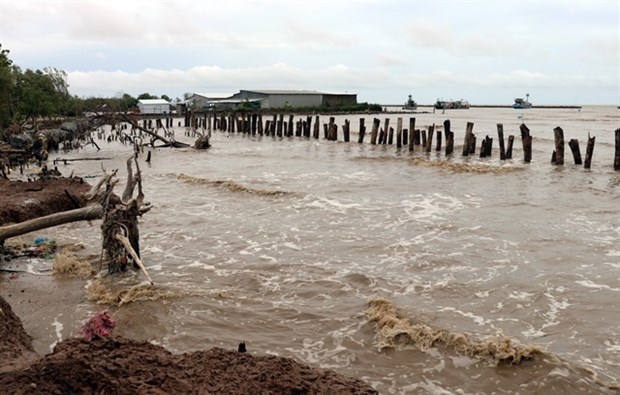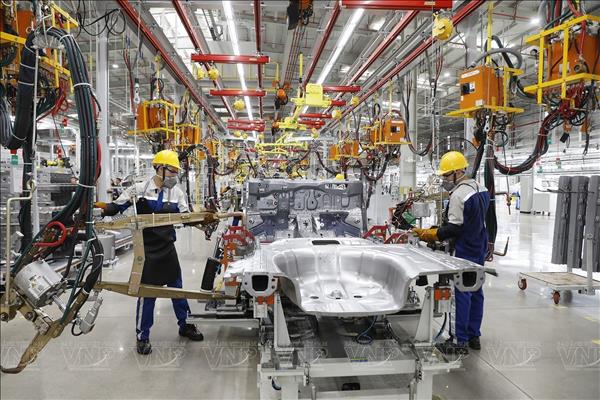An international conference opened in Hanoi on June 24 honouring the Vietnam University of Fine Arts (VNUFA)'s 100th anniversary of development and its contributions to developing the modern fine arts and serving the nation.
The event, organised by the VNUFA, featured nearly 40 presentations from Vietnamese and foreign participants, including those from Russia, France and Japan.
The presentations included research conducted by scientists from various perspectives and with outstanding scientific value. They summarise deep research and provide a comprehensive view of the 'proud historical journey' of the art university.
Opening the conference, Lan said, from its origin as the L'Ecole des Beaux-Arts de L'Indochine (Fine Arts College of Indochina) -- the very cradle of Vietnamese modern art -- to its present identity as the VNUFA, one of the leading units in art training, the university has witnessed dramatic transformations of both the country and the national art scene.
Over the past century, the university has undergone continuous development, overcoming challenges during various historical periods.
Lan said: "From the difficult years of resistance, when teachers and students alike devoted their efforts to revolutionary art, to the post-war decades of nation-building and now into the current era of integration and development.
"Each stage has been marked by the quiet, deeply meaningful contributions of generations of artists, educators, and students to the nation’s greater cause."
The principal firmly believed that, with the presence of leading scholars and experts from both Vietnam and abroad, the conference would serve as an 'open academic platform', a space for diverse perspectives to be shared and discussed, and for practical solutions to be proposed.
"The research and presentations at this event will not only form the basis for reflection and evaluation but also serve as a compass to guide the future development of Vietnamese fine arts in general, and of the VNUFA in particular," she added.
Meanwhile, Goseki Ryoko from Japan expressed some differences through her experiences studying at a Japanese art university and pursuing graduate studies at the VNUFA.
She said: "In Japan, after World War II, art was strongly influenced by Western art and modernism, and education emphasised freely creating works based on specific themes. In contrast, Vietnam has inherited the educational style of the Indochina School of Fine Arts from the colonial era.
"While accepting Western influences, Vietnam places great importance on artistic styles rooted in its traditions and culture. As a result, I was particularly struck by the basic training in figure drawing that I received before the entrance exam at the VNUFA. This training enabled me to gain a deeper understanding of the human body's structure and develop the ability to accurately depict its details."
"In Japan, due to a lack of technical skills, even if I came up with interesting ideas, I struggled to fully express them. However, the education at the VNUFA sharpened my observational skills and laid the foundation for my creativity in later works. In other words, the foundational training in drawing at the university is essential in expanding the range of artistic expression without hindering creativity."
Gildas Tréguier, a French art collector from APPEL (Association pour la Promotion et la Protection des Œuvres d'Art) wrote in a statement that: "The centenary of the founding of the VNUFA is a wonderful opportunity to reflect on the significance of this fascinating chapter in art history, revisiting a question posed as early as 1997 by Nadine André Pallois with the publication of her book Indochina, a Place of Cultural Exchange (L’Indochine, un lieu d’échange culturel) by the French School of the Far East (l’Ecole française d’Extrême-Orient) press.
"And because we live in Brittany (Bretagne) while working in Vietnam as part of medical cooperation, we have taken an interest in the twenty or so artists who, between 1880 and 1954, painted both Vietnam and Brittany."
Within the framework of activities to celebrate the 100th anniversary of the school's establishment, the conference was held following the previous workshop themed Truong My thuat Dong Duong va Su Mang Lich Su (Indochina School of Fine Arts and Historical Mission), which took place in October 2024, attracting the attention of many domestic and foreign scientists./.



















